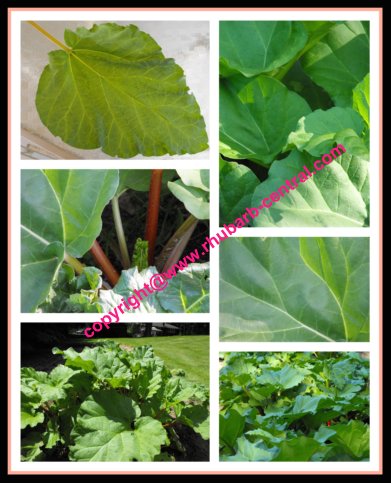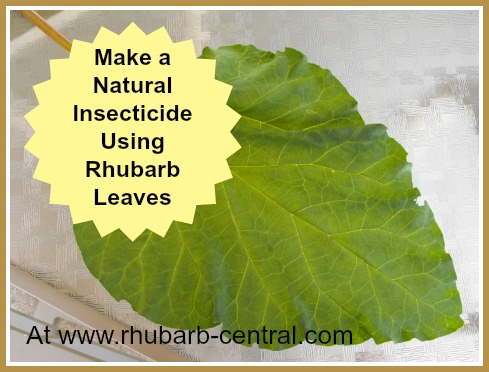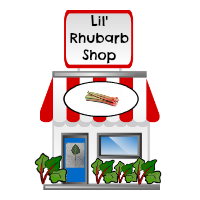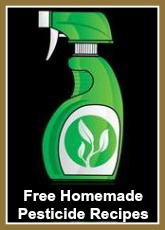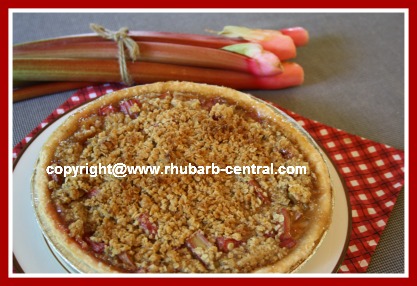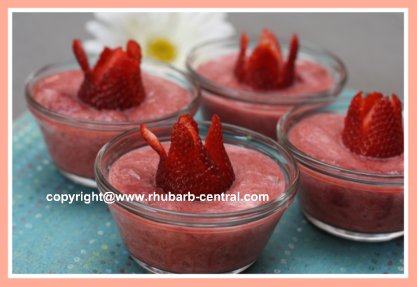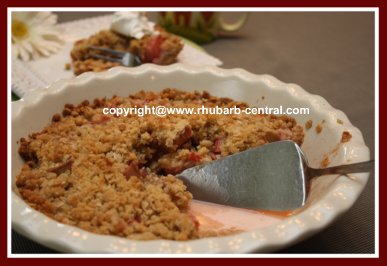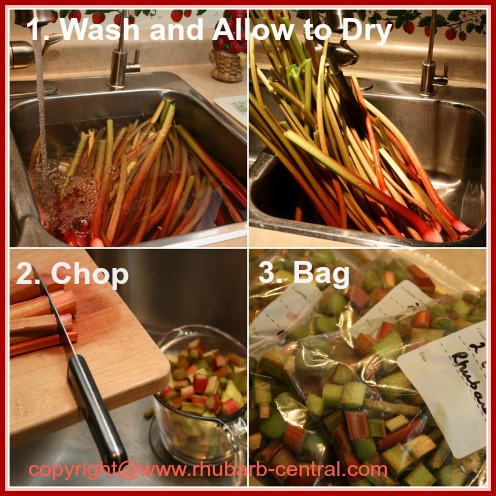Are Rhubarb Leaves Poisonous?
Make a Natural Insecticide with the Leaves
Rhubarb leaves are considered poisonous due to the fact that they contain high levels of Oxalic Acid. Oxalic Acid is sometimes called "ethane diacid".
*FTC Disclosure: As an Amazon Associate I may earn from qualifying purchases with no extra cost to you
*FTC Disclosure: As an Amazon Associate I may earn from qualifying
purchases with no extra cost to you
The edible portion of rhubarb, the stalks, contain only a very low concentrate of oxalates, and are very safe to eat.
Oxalic acid is also found in safe amounts in cabbage, spinach, potatoes and peas, amongst others.
The fact that the leaves are considered to contain oxalic acid is NOT a reason not to enjoy eating rhubarb. The stalks are what is harvested to eat, not the leaves!
Scroll down for a recipe to make a homemade natural insecticide using your rhubarb leaves, and a link to many more recipes for natural and organic pesticides and insecticides.
Oxalic acid is a poisonous, colorless substance commonly used in products such as metal polishes, stain removers, bleaches, and anti-rust products.
Some of the symptoms of Oxalic Acid poisoning include, abdominal pain, collapse, convulsions, kidney problems, low blood pressure, mouth pain, shock, throat pain, tremors, vomiting, weak pulse. (Information Source: Medline Plus).
Use precautions when harvesting rhubarb by trimming the leaves from the stalks immediately, not using stalks from plants that have been "frost bitten", and washing the stalks before using them, and before preparing them for the freezer or for canning rhubarb.
Children should be taught to eat only the rhubarb stalks, (if they do not find the raw rhubarb too tart!), with adult supervision.
See Also: Rhubarb Allergy Information
The leaves of rhubarb should never be fed to animals. Some animals such as goats and pigs, have also been poisoned by ingesting these leaves.
Many visitors ask, " Can rhubarb leaves be composted? "
It would stand to reason that if the leaves are poisonous, then adding them to compost would be a concern.
However, since the oxalic acid is broken down, diluted and pH balanced quite quickly, this is not a concern.
Since humans and animals do not normally ingest matter from a compost, rhubarb leaves should be able to be added safely to the compost.
Go here for more information and tips for composting rhubarb leaves.
Interestingly, the leaves of rhubarb can be used to make a natural insecticide.
If you have a large rhubarb patch, you may be interested in making this natural insecticide using the leaves after picking your rhubarb.
A Recipe for Natural Insecticide Using Rhubarb Leaves
Boil 500 grams of rhubarb leaves in a few pints of water for about 20 minutes.
Allow leaf mixture to cool.
Strain the liquid into a CHILD PROOF/SAFE suitable container.
Add a tiny bit of dish detergent or soap flakes, (not laundry detergent).
Using a spray bottle, spray on leaves to kill off bugs such as aphids and spider mites, June bugs, and fungus diseases.
*NOTE - DO NOT spray this product on ANYTHING edible. Rhubarb leaves contain high amounts of oxalic acid, and are poisonous, and could cause death.
If you are interested in more recipes to make simple homemade Natural Pesticides and Insecticides, Go here
Here are additional pages within this website that provide helpful information about growing rhubarb in the home garden (or use the website's navigation bars):
LINKS RELATED TO RHUBARB GARDENING
ORGANIC PESTICIDE RECIPES and Information
CONTAINER GARDENING - Can Rhubarb be Grown in Containers/Pots?
TOP of Rhubarb Leaves
HOME to Homepage of Rhubarb-Central.com
Enjoy this Page? Please Share!
©2010-2025 Rhubarb-Central.com
All Rights Reserved Worldwide
No Reproduction Permitted Without the Expressed
Written Consent of the Site Owner
No More
Burned Pie Crust!
Get the
PIE CRUST SHEILD
↡↡↡
My Gardening
FAVORITES
and GIFT IDEAS
↡


